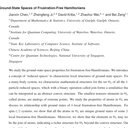Wenxin-Keli Regulates the Calcium/Calmodulin-Dependent Protein Kinase II Signal Transduction Pathway and Inhibits Cardiac Arrhythmia in Rats with Myocardial Infarction.
Raktažodžiai
Santrauka
Wenxin-Keli (WXKL) is a Chinese herbal compound reported to be of benefit in the treatment of cardiac arrhythmia, cardiac inflammation, and heart failure. Amiodarone is a noncompetitive inhibitor of the α - and β -adrenergic receptors and prevents calcium influx in the slow-response cells of the sinoatrial and atrioventricular nodes. Overexpression of Ca(2+)/calmodulin-dependent protein kinase II (CaMKII) in transgenic mice results in heart failure and arrhythmias. We hypothesised that administration of WXKL and amiodarone can reduce the incidence of arrhythmias by regulating CaMKII signal transduction. A total of 100 healthy Sprague Dawley rats were used in the study. The rats were randomly divided into four groups (a sham group, a myocardial infarction (MI) group, a WXKL-treated group, and an amiodarone-treated group). A myocardial infarction model was established in these rats by ligating the left anterior descending coronary artery for 4 weeks. Western blotting was used to assess CaMKII, p-CaMKII (Thr-286), PLB, p-PLB (Thr-17), RYR2, and FK binding protein 12.6 (FKBP12.6) levels. The Ca(2+) content in the sarcoplasmic reticulum (SR) and the calcium transient amplitude were studied by confocal imaging using the fluorescent indicator Fura-4. In conclusion, WXKL may inhibit heart failure and cardiac arrhythmias by regulating the CaMKII signal transduction pathway similar to amiodarone.



